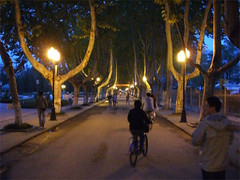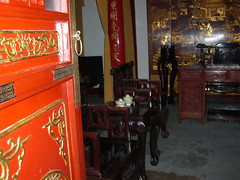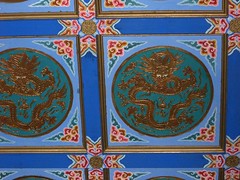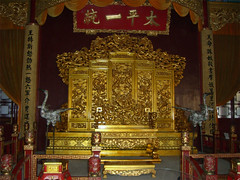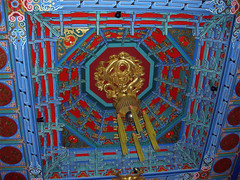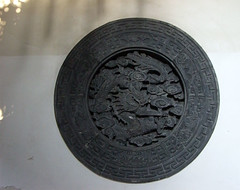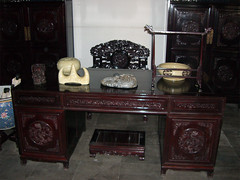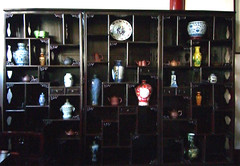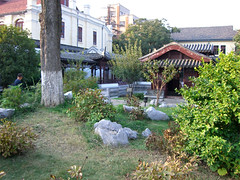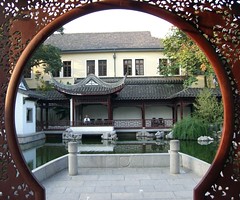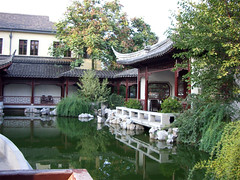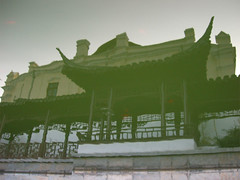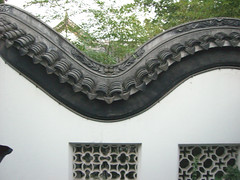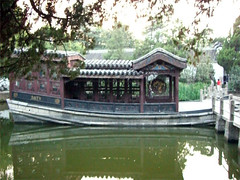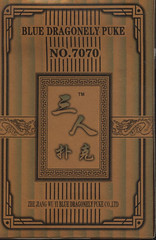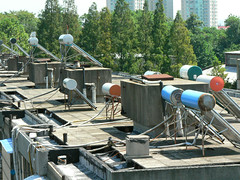China is under construction. Every street corner that you visit has a new building underway, with older houses being ripped down to make room for another enormous skyscraper. Nanjing used to be home to China's tallest building, the Jinling hotel, in 1990, with around 18 floors. Now, that honour falls to the Jin Mao tower in Pu Dong (Shanghai), which is also the fourth tallest building in the world; they're building what will be the world's tallest building just around the corner, too, due in late 2007.
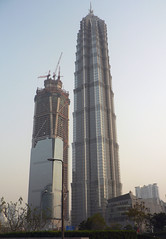
More than eighteen stories..
The Chinese are no slowcoaches when it comes to building, either. A pair of 20-storey apartment blocks were erected and occupied within 10 weeks of moving here. My university (NUAA) created an exhibition building and a modern arts centre inside one month when news of an inspection came. Over the road from the uni, there's an enormous development that didn't exist when we arrived, and is almost finished, which could house tens of thousands of people. It's simply phenomenal!

New apartments - 2 months from flat ground to inhabitation.

New university buildings - 1 month from flat ground.
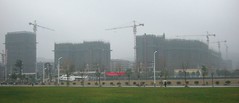
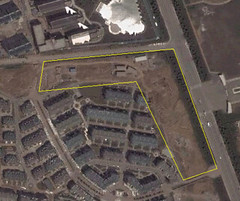
New apartments opposite university - now complete; took 6 months to build residences for 30,000 people. If you visit this area on Google maps, you can see that the upside-down-L shaped area they occupy is nothing but brown dirt with a few shacks.
This rapid rate of development is courtesy of the millions of workers who migrate from the poorer countryside into the cities, to earn money for their families. They often save money by living inside the incomplete building sites, sleeping inside makeshit tents of hammocks. It's really impressive and practical.
Traditional Chinese scaffolding is still used on most sites less than six or seven stories high; instead of bolting together tubes of cast iron, a much less expensive, lighter, and equally durable material is used - bamboo! This used to be used for buildings of all different sizes, but now larger constructions tend to go for metal scaffolds. A very shiny and tall hotel building in Hong Kong was built using solely bamboo supports in during the 1990s.


Side effects of a booming construction trade can also been seen everywhere - the pavements are often occluded by building supports, or even huge piles of raw building materials, and there's a plethora of different kinds of construction vehicles on the roads.
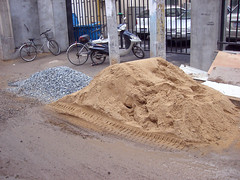
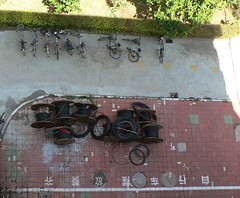
Cement mixers are common, as are huge 20-tonne overladen 12-wheel trucks full of dirt zooming in an out of town. The city's streets are coated in construction dust, which gets everywhere, especially when the city's dry! This doesn't appear to affect the locals much, though the Chinese culturally consider the floor to be an extremely dirty thing, that you wouldn't rest your bag on even for a second.
